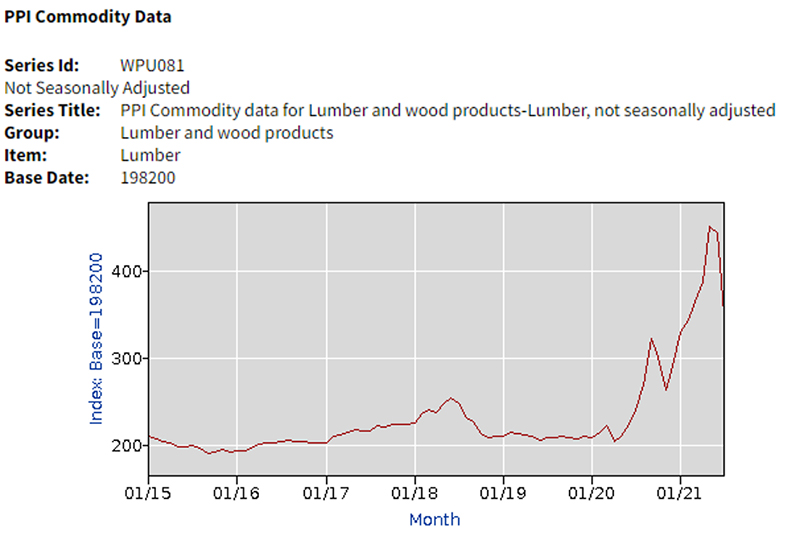Building costs: fueled by higher demand/supply constraints - by Marc Nadeau

Building costs have been rising since June of 2020, it was almost as if a gun went off at the starting line of a race! Only that the participants in this case included a number of characters and elements, inclusive of new home buyers entering the market that had been sitting on the sidelines for years, record low interest rates, a disruption in the supply of lumber due to COVID and lastly, a terribly unfriendly tariff situation between the United States and Canada.
New Home Buyers
Over the past year, record numbers of new home buyers, many of whom were millennials who jumped into the fray, putting upward pressure on the real estate market, wherein we have seen double-digit percentage increases in the prices of many of the home markets in New England.
Record Low Interest Rates
Chart 1 shows a three-year trend for 30-year mortgage rates, which reached a record low in January of 2021, inched up over 3% this past spring, only to decline again in August to a reported rate of 2.87%. The relatively inexpensive cost of money will keep at least some potential home buyers in the market, while at the same time drawing out some of those existing homeowners who already have older mortgages to make application to refinance at lower rates.

Soaring Lumber Prices
Lumber prices continued to increase through June of 2021 with July actually showing a decline in the Producer Price Index. The below chart illustrates change in lumber and wood products through July of 2021. Certain products such as hardwood lumber, softwood lumber and plywood have led the way through June of 2021 with July showing a distinct downturn in lumber prices, but not nearly enough to offset the sharp increases over the past year. Chart 2 illustrates recent trends in lumber prices.
Tariffs and More Tariffs?

Trade wars have proven to be a popular battlefield amongst the United States and various countries, with China taking center stage. But closer to home is the current trade situation with Canada, who according to the U.S. Trade Commission supplies twenty times more lumber to the U.S than any other supplier on the planet. The Trump Administration imposed tariffs on incoming lumber from Canada, which amounted to a 9% tariff on lumber products being shipped to the United States. The Biden Administration recently recommended doubling tariffs on Canadian lumber despite skyrocketing prices for U.S. consumers. The proposal has been met with heavy criticism, both domestically and internationally. The proposed increase has since been tabled.
Signs of a Slowing Market
The low cost of money has certainly been an enticing element however, the rate of increases in real estate prices is simply pricing some participants out of the market. Sales of new single family homes dropped in June to the lowest level since the early days of the pandemic according to the U.S. Census Bureau. Sales of single family homes fell to an annualized 676,000, 6.6% below May’s rate of 724,000 and 19.4% below the June 2020 level of 839,000. Inventory is starting to build in certain markets and marketing times have gotten longer, especially for high-end properties and seemingly, for properties that are simply just over-priced. Perhaps the days of sellers naming their price and buyers jumping at the opportunity to “finally get a home” are over? If not, they are certainly starting to wane.
Perhaps one of the more overlooked benchmarks is that real wages have not kept up with the increases in home prices. It is this widening gap that ultimately will tell whether we are in for another market correction.
Marc Nadeau, SRA, is a certified general appraiser and president of the Connecticut Chapter of the Appraisal Institute.
Eastern Bank donates $2 million to Lynn Public Schools


It’s a confusing real estate world: Don’t you think? - by Daniel Calano

The focus on price per s/f compared to the comparable sales used in the appraisal report - by Dennis Chanski

Real estate without good estate planning - a troublesome problem - by Daniel Calano










.png)
